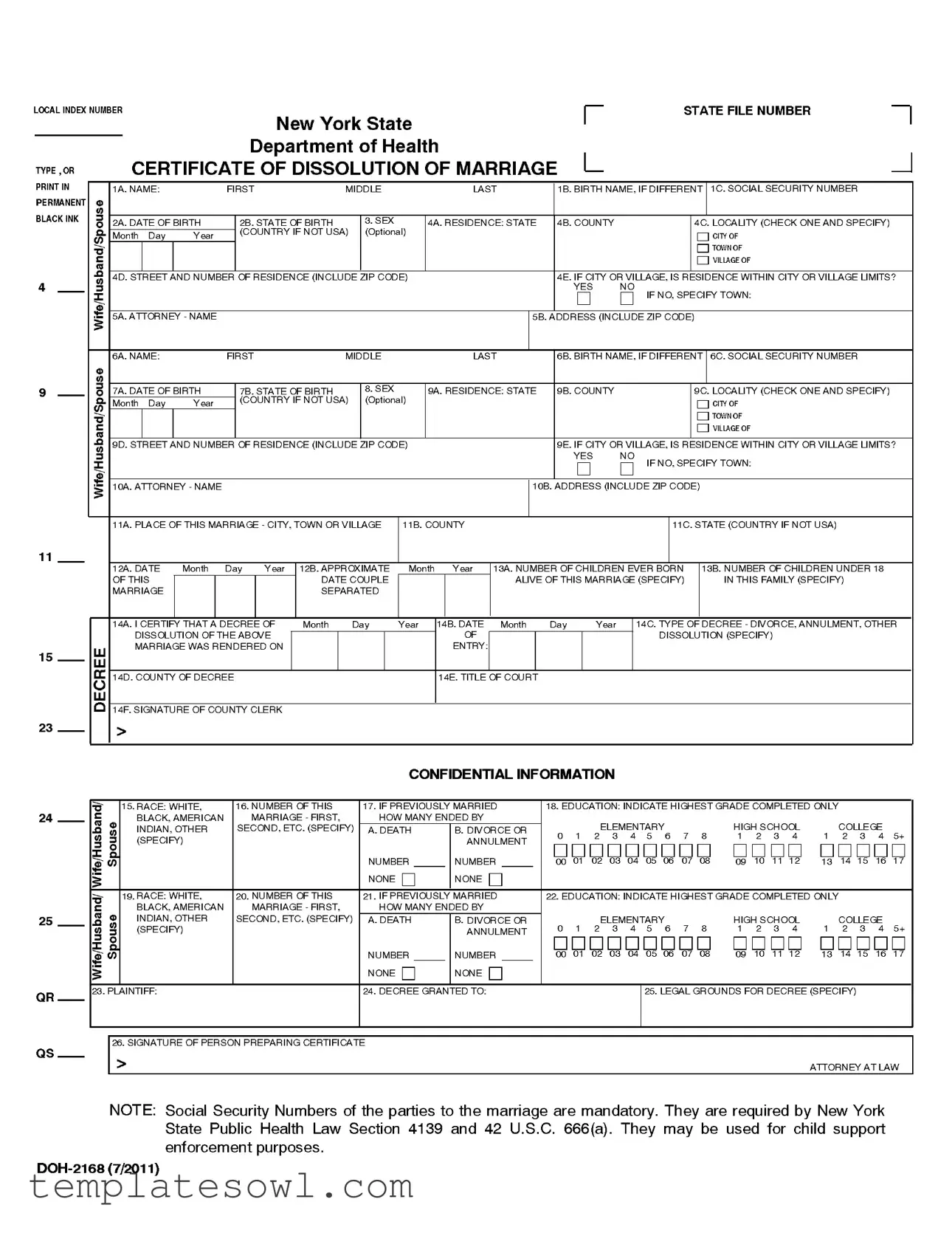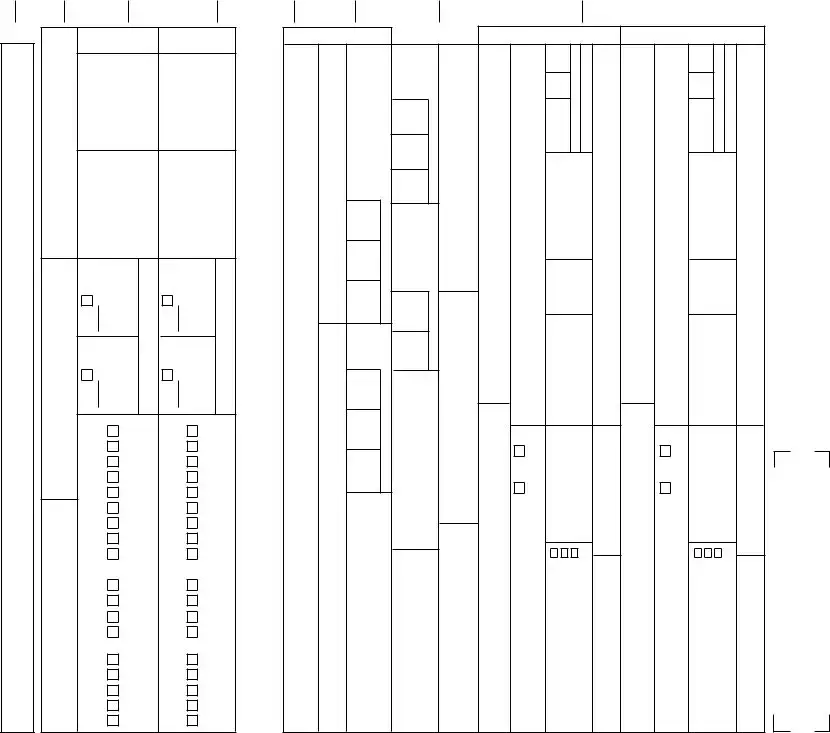Filling out the DOH 2168 form can be a straightforward process, but many individuals make simple mistakes that can complicate their applications. One common error is related to the incomplete naming of the parties involved. Applicants often forget to provide all necessary details, such as full legal names, middle names, or birth names if they differ. Each individual's name must be clearly stated to avoid confusion.
An additional issue arises with the social security numbers. This vital information is not only mandatory but also crucial for processing the form. Failing to include correct social security numbers or making typographical errors in this section can lead to significant delays. Thus, it’s essential to double-check this information before submission.
Another frequent mistake relates to the date sections. Errors in recording dates, whether for birth, marriage, or separation, can adversely affect the review process. Dates must be accurate and formatted correctly; even a small discrepancy can result in a rejection of the application.
People often overlook the section about residences. It is important to provide comprehensive, correct details regarding the current state, county, and locality. Missing or incorrect address information can lead to confusion and potential rejection by the department.
Failure to acknowledge the option for sex designation can also lead to a misunderstanding in processing. While this section is optional, it is advisable to complete it to ensure all pertinent information is readily available for review.
Another mistake commonly made involves the section for previous marriage information. Applicants might forget to specify the number of previous marriages or how they ended, which is necessary for an accurate assessment. Incomplete disclosures in this area can hinder processing and may also create legal complications later.
Education details are often skipped or inaccurately filled. It's vital to indicate only the highest grade completed. Omissions or errors here can complicate the evaluation. Reviewers rely on this information for various legal considerations, emphasizing the importance of accuracy in this section.
When it comes to the plaintiff details section, mistakes in indicating who is filing the certificate can create confusion. The form should clearly specify whether the husband, wife, or another party is the plaintiff. Failure to identify the correct plaintiff may lead to complications in the processing of the dissolution.
Sometimes, the form is returned due to poor or illegible handwriting. Submitting a form that cannot be easily read puts the applicant at risk of delays or further questions. Therefore, printing clearly and using black ink can help avoid unnecessary setbacks.
Finally, neglecting to provide a signature can halt the entire process. Forms must be properly signed by the appropriate parties. Make sure to review the document thoroughly and ensure that all necessary signatures are present before submission.



